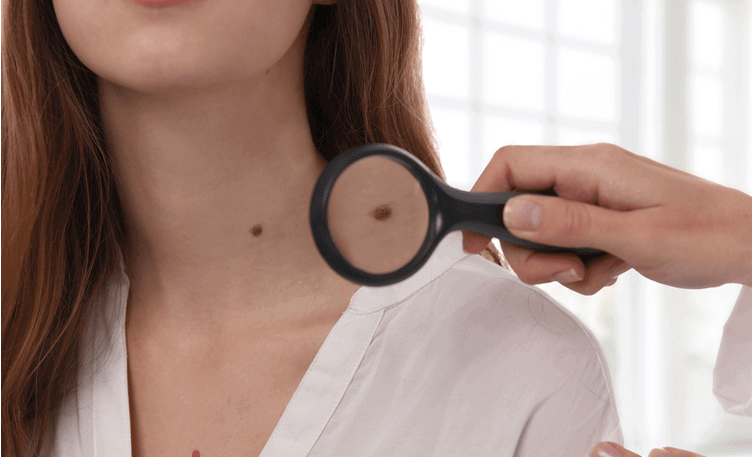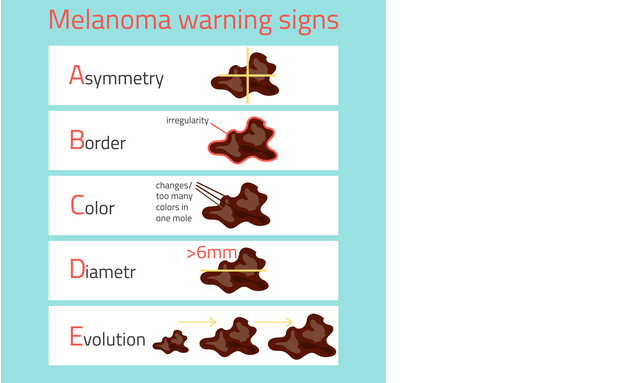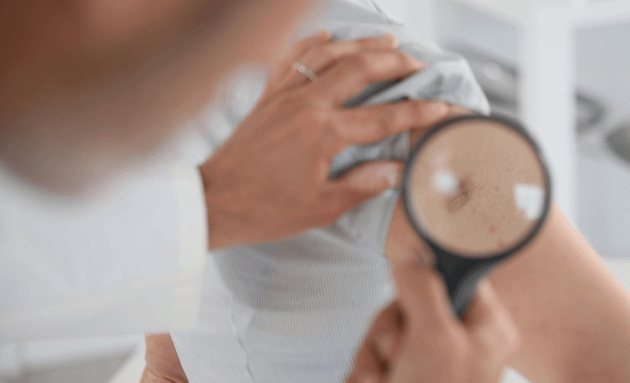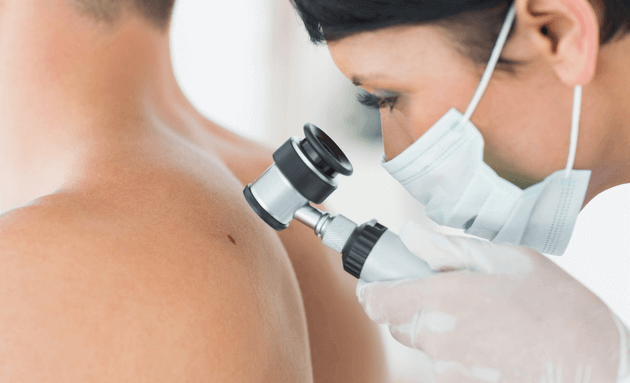
When Should You Get Your Moles Checked?
What Are Moles?
Moles, also known as Melanocytic nevus, are groups of melanocytes, our pigment-producing cells. They are present on the topmost layer of your skin and are usually flesh-coloured, shades of brown, or black.
Moles are caused due to two main factors: family history and exposure to the Sun. Moles are present right from birth, but may also develop in our 30s and 40s.
It is important to perform a skin check every 3 months to ensure there is no risk of Melanoma or other forms of skin cancer.
What Are The Types Of Moles?

A mole is found in almost 10 million people in India, and comes in different shapes, sizes, and colours. Based on its appearance and time of development, moles on the skin can be classified into the following types:
- Congenital Moles
Some moles appear right from childbirth and are known as congenital moles or congenital nevus. Only 1% of people with moles have a congenital mole. However, they are at a higher risk of developing skin cancer.
-
Acquired Moles
Acquired Moles develop over time. Excessive exposure to the sun leads to the development of moles on your skin. UV rays and sunlight causes higher melanin production (a pigment that makes up the moles). Higher the amount of melanin, darker is your mole. They may also respond to hormonal changes during puberty or pregnancy and become darker with time.
-
Atypical Moles
Atypical moles, also known as dysplastic nevi usually occur in people with a family history of it. They are irregularly shaped, with uneven colour gradation and edges. They are usually larger than a pencil eraser and can develop into skin cancer if left unchecked.
What Should You Look For When Examining Your Moles?

A suspicious mole on your skin may be of concern. Consult a doctor or dermatologist if you spot any warning signs. While doing a skin self-examination, look for the following:
A for Asymmetry: When your mole doesn’t look the same throughout, it may be a sign of melanoma or skin cancer.
B for Border irregularity: If your mole has an irregular or undefined border, consult the doctor.
C for Colour variation: If your mole has multiple shades of brown, black, or blue, there may be some disparity in the melanin production in your body.
D for Diameter: If your mole has grown larger than the size of an eraser, it may be a sign of Melanoma.
E for Evolving: If your mole has changed colour, shape, or size over time.
At the same time, look for any new moles that may have appeared on your skin, or any moles that may bleed or be painful.
How Should You Examine Your Skin For Moles?

Regular skin self-examinations will help you notice any warning signs and pave the way for early diagnosis and treatment of probable Melanoma or other Skin Cancers.
- Use a full-length mirror after a shower (while your skin is still wet) to examine any visible moles on your skin.
- Ask a family member to help you examine areas like your back.
- Follow a pattern of examination every month so as to not miss any places (include areas like the scalp, toes, and fingers as well).
- Keep a record of the shape, size, and colour of your existing moles so you can track any changes.
- If you notice any visible changes or a rash or bleed on your mole, consult a doctor immediately.
Removing A Skin Mole

Most moles are not cancerous. However, if your doctor finds anything suspicious with the appearance of your mole, he or she may suggest getting a mole biopsy done. This will help diagnose any early warning signs of Melanoma or Skin Cancer.
If you want to remove moles for cosmetic reasons, your doctor will advise you on surgery and removal based on your skin type and skin conditions. Larger moles may be difficult to remove, but an expert should be able to guide you along the way.
Consult a certified dermatologist only to have your moles checked or removed.

If you have a family history of moles or skin cancer, along with a routine skin check, you should consult a dentist, gynaecologist, and ophthalmologist to check for moles in specific areas.

